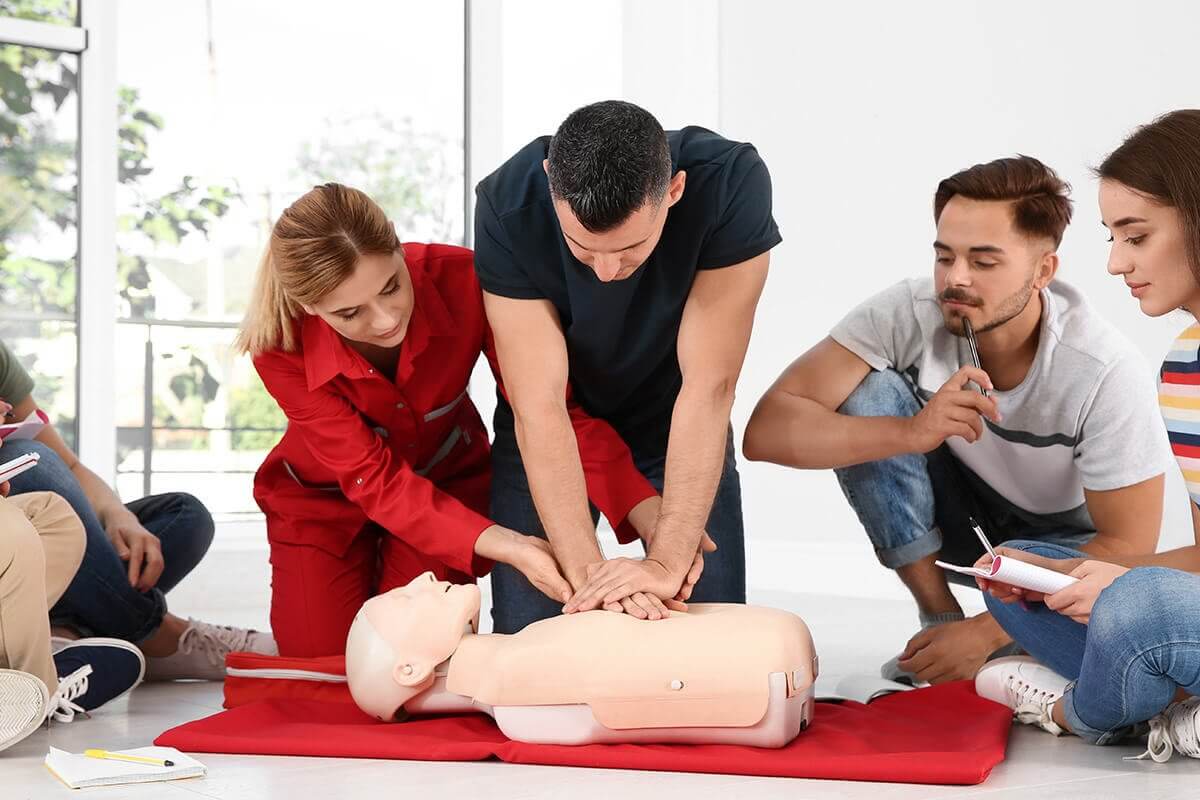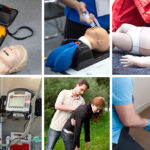CPR, or cardiopulmonary resuscitation, is one of the most important life-saving procedures anyone can learn. Through a combination of chest compressions and rescue breaths, a bystander can take action and greatly increase the survival rate of someone undergoing cardiac arrest. In fact, according to a 2014 study, 45 percent of cardiac arrest victims survived when a bystander performed CPR.
Here at the American CPR Care Association, we believe comprehensive and high-quality CPR training is one of the most effective ways to provide you with the skills, knowledge, and confidence, to potentially save a life. Additionally, since over 475,000 Americans die each year from cardiac arrest, we believe that CPR certification should be accessible to everyone.
We offer nationally accepted certification courses in CPR/AED, First Aid, Bloodborne Pathogens, and a combined CPR and First Aid class—all 100 percent online. We also offer classes in CPR and Healthcare Certification designed specifically for those in the healthcare field.
In this blog, we’re taking a closer look at what exactly is covered in a CPR certification course and why it’s so important for everyone, not just those in the medical field, to learn this life-saving procedure. We also explore some of the advantages of earning your CPR certification course through our 100 percent online classes. While we all hope to never be directly involved in a medical emergency, learning and becoming certified in CPR could be one of the most rewarding decisions of your entire life.
STEPS TO FOLLOW FOR CPR
In an online CPR certification course, you’ll learn the proper CPR steps and much more. Before diving into what a CPR certification class covers, let’s take a brief look at the foundational steps of CPR. While these serve as a core focus for these classes, you’ll also learn how to safely assess the emergency situation, how to use an AED, and key differences between adult, child, and infant CPR.
- Assess the situation and the victim (check to see if they are responsive).
- Call 911.
- If nearby, send someone to get an AED.
- With the victim on their back, check the airway by tilting their head back and lifting the chin.
- Check for breathing.
- If you can’t detect a breath, begin CPR.
- Interlock your hands and perform chest compressions at a rate of 100 compressions per minute.
- Perform two rescue breaths. Carefully watch to ensure their chest rises. If it doesn’t adjust the airway and try again.
- Continue a cycle of chest compressions and rescue breaths until medical assistance arrives.
WHAT IS COVERED IN A CPR CERTIFICATION COURSE?
Before you get CPR certified, you may be curious as to what exactly is covered in a CPR certification course. Do they teach you more than just chest compressions and rescue breaths? The short answer is, yes. In these 100 percent online courses, you learn various skills, techniques, and background knowledge to ensure you can perform CPR safely and effectively. Here’s a closer look at what is covered in these online courses:
1. Assessing the situation.
Before beginning CPR, you must be able to safely assess the situation, so you don’t put yourself, or anyone else, in harm’s way. You’ll also learn how to utilize personal protective equipment (PPE) and the five critical steps of the ECC’s Chain of Survival.
2. Adult CPR.
Since most cardiac arrest victims are adults, adult CPR is a core section of the online CPR certification course. You’ll learn how to check the victim’s breathing and pulse and how to effectively administer chest compressions and rescue breaths.
3. Child CPR.
Compared to performing CPR on an adult, there are certain changes one should make when administering to a child. For example, for child CPR, you only need to use one hand for chest compressions. These online CPR courses highlight the important differences between adult and child CPR.
4. Infant CPR.
Similar to child CPR, there are unique adjustments one must make when administering CPR to an infant, such as using only two fingers, instead of a whole hand, for chest compressions.
5. Using an AED.
A combination CPR/AED certification course will also teach you how to safely use an AED device. The AED, or automated external defibrillator, is a small medical device that detects a cardiac arrest victim’s heartbeat. If the heartbeat is irregular, an AED will emit a small electrical shock to reset the heart.
6. Coronavirus CPR Guidelines.
As part of the updated 2020 AHA guidelines, these courses now include modifications to help respond to the coronavirus pandemic. These changes include limiting the involved personnel, reducing provider exposure, and encouraging bystanders to use hands-only CPR.
BENEFITS OF ONLINE CPR CLASSES
In recent years, more and more people have been turning to online classes and eLearning. As digital tools and platforms become more sophisticated, the advantages of online classes have become more apparent. In fact, according to the National Center for Education Statistics (NCES), almost 7 million students were enrolled in online classes in 2018. And in response to the recent COVID-19 pandemic, those numbers will most likely increase.
If you’re interested in becoming CPR certified, there are many advantages to pursuing this goal with 100 percent online classes. Not only are these courses convenient, fast, and affordable, but they allow you to learn from the comfort of your home. Here are just a few of the benefits of online CPR courses:
1. Fast.
If you need your CPR certification fast, an online course is perfect for you. While these classes let you set your own pace, many individuals can complete the course within a matter of hours. Simply select your course, pass the test, and print off your certification card—it’s really that easy.
2. Set your own pace.
One of the greatest advantages of online courses is that you get to learn at your own pace. Whether you’re a night owl or a morning person, you decide when class begins (and ends). You can also pause any lesson at any time and pick right back up where you left off. This is ideal for those already working full time or with other important responsibilities.
3. Convenient.
With online CPR certification, learning these skills has never been more convenient. You can access your courses with any digital device (laptop, tablet, or smartphone) and you never have to worry about making it to class on time since you can begin whenever you’re ready and even start and stop any lesson as needed.
4. Instant certification.
Once you’ve passed your online test, all that’s left to do is to print off your CPR certification card. This form of instant certification is ideal if you need certification fast. Simply download your CPR certification wallet card and you’re good to go. Even better, you’ll also receive a print certification in the mail.
CONCLUSION – WHAT IS COVERED IN A CPR CERTIFICATION COURSE?
According to the Sudden Cardiac Arrest Foundation, over 1,000 people suffer cardiac arrest each day. For those victims who are far from a hospital or medical assistance, referred to as out-of-hospital cardiac arrests (OHCA), almost 90 percent of these incidents prove fatal. If more bystanders are trained and certified in performing CPR, this fatality rate could be drastically decreased. In short, CPR saves lives, and in just a matter of hours, you could gain the skills and confidence to perform this life-saving procedure.
To help combat this national health crisis, American CPR Care Association is proud to offer 100 percent online CPR certification courses. We also offer CPR recertification courses to help keep your skills fresh from the comfort of your home and on your own schedule. Learning CPR has simply never been this easy or convenient. For more information on the courses we offer, visit our website today or reach out to us at [email protected] or 1-888-808-9109.







